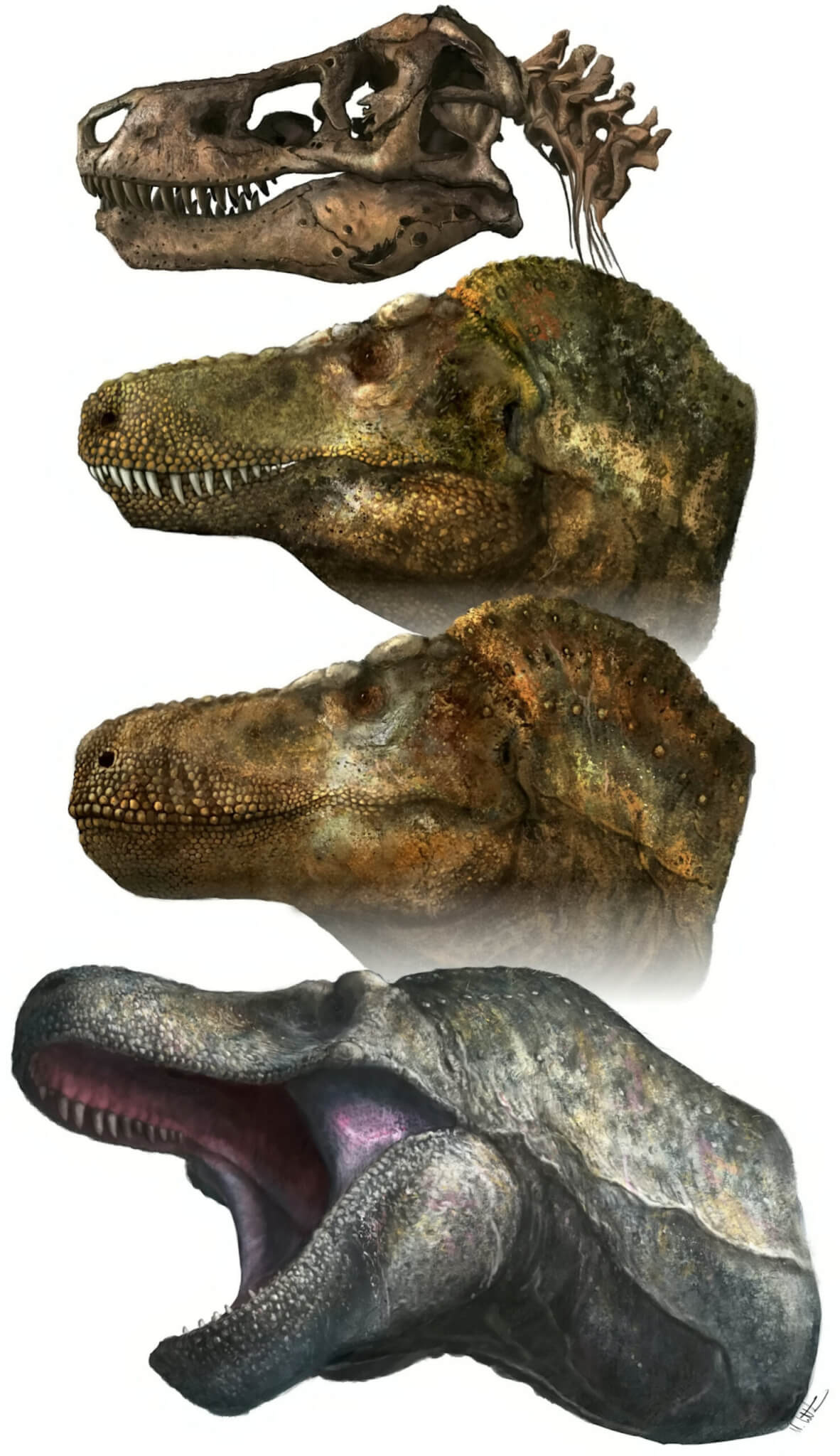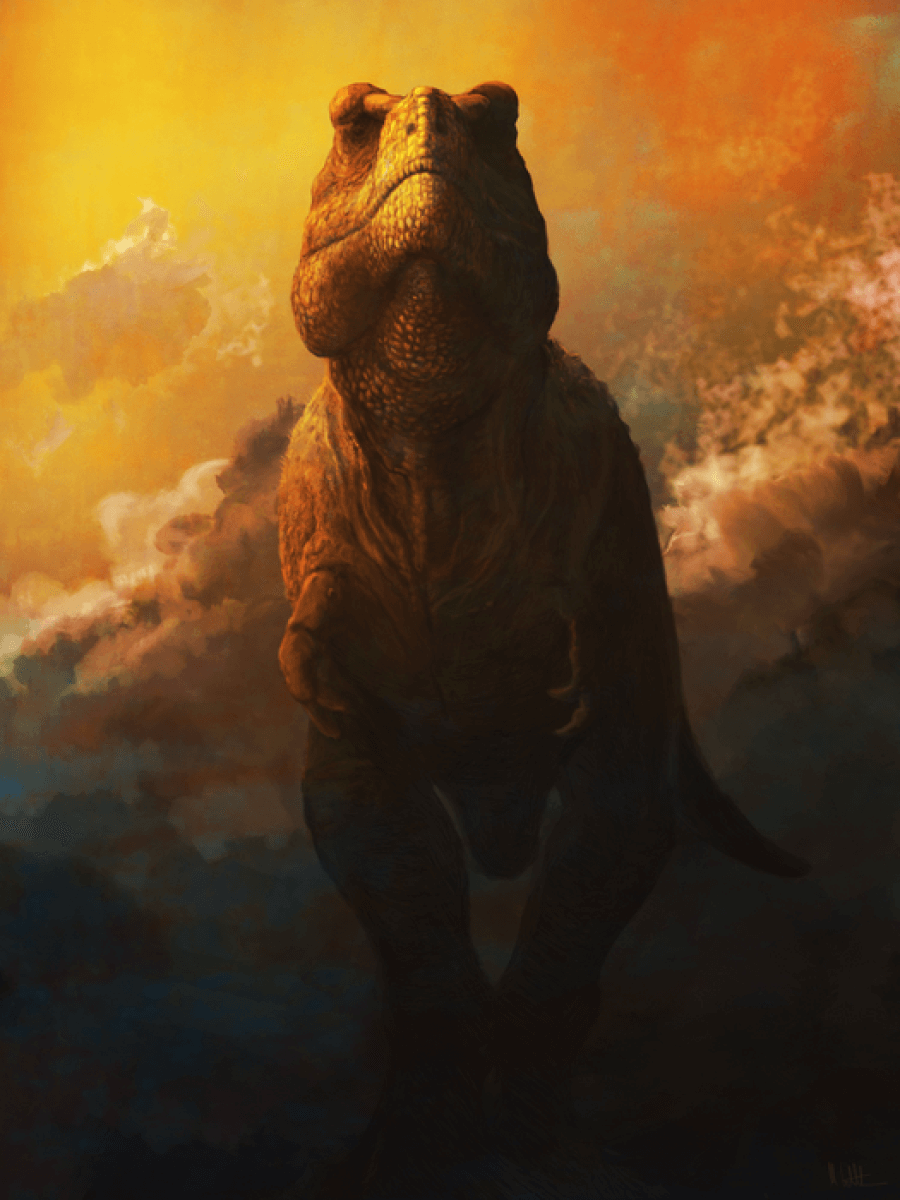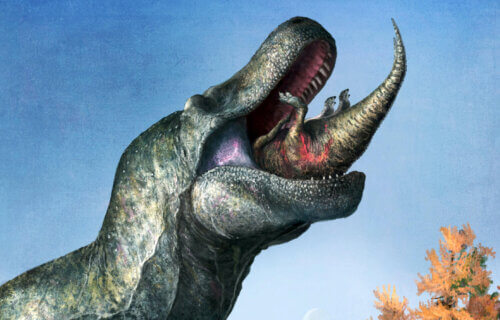PORTSMOUTH, United Kingdom — The mighty Tyrannosaurus rex had humongous lips that covered its sharp, jagged teeth, a new dinosaur study reveals. According to an international team, the depictions of the T. rex in films like “Jurassic Park” that make it look extremely fierce are actually wrong.
The study finds predatory dinosaurs had scaly, lizard-like lips that would have kept its mouth shut most of the time. The team examined the tooth structure, wear patterns, and jaw shapes of lipped and lipless reptile groups during their project. They found mouth anatomy and function of meat-eating theropods, a dinosaur group which includes T. rex, resembled lizards more than crocodiles.
“Dinosaur artists have gone back and forth on lips since we started restoring dinosaurs during the 19th century, but lipless dinosaurs became more prominent in the 1980s and 1990s. They were then deeply rooted in popular culture through films and documentaries — Jurassic Park and its sequels, Walking with Dinosaurs and so on,” says study co-author Dr. Mark Witton from the University of Portsmouth in a media release.
“Curiously, there was never a dedicated study or discovery instigating this change and, to a large extent, it probably reflected preference for a new, ferocious-looking aesthetic rather than a shift in scientific thinking. We’re upending this popular depiction by covering their teeth with lizard-like lips. This means a lot of our favorite dinosaur depictions are incorrect, including the iconic Jurassic Park T. rex.”

Rethinking dinosaur depictions in museums
T. rex and his fellow theropods, such as the Velociraptor, would not have teeth that stick out even when their mouths are closed unlike reproductions in movies and museums. Only a few land animals such as elephants and wild boars have exposed teeth. Moreover, these teeth have no enamel.
“Dinosaur teeth have very thin enamel and mammal teeth have thick enamel (with some exceptions). Crocodile enamel is a bit thicker than dinosaur enamel, but not as thick as mammalian enamel. There are some mammal groups that do have exposed enamel, but their enamel is modified to withstand exposure,” says co-author Kirstin Brink, an assistant professor of Paleontology at the University of Manitoba.
The idea top predators like T. rex and Velociraptor had mouths where perpetually visible upper teeth hung over their lower jaws (similar to the mouth of a crocodile) has been debated for decades. The most detailed study of its kind to date now shows their lips were similar to those of lizards and their relative, the tuatara — a rare reptile which lives in New Zealand. They are the last survivors of an order that thrived during the age of the dinosaurs.
Unlike mammals, they were not muscular. Most reptile lips cover the teeth but cannot be moved independently. They don’t curl back into a snarl or make other sorts of movements we associate with lips on humans.
“Paleontologists often like to compare extinct animals to their closest living relatives, but in the case of dinosaurs, their closest relatives have been evolutionarily distinct for hundreds of millions of years and today are incredibly specialized,” explains study co-author Derek Larson, Collections Manager and Researcher in Paleontology at the Royal BC Museum in Canada.
“It’s quite remarkable how similar theropod teeth are to monitor lizards. From the smallest dwarf monitor to the Komodo dragon, the teeth function in much the same way. So, monitors can be compared quite favorably with extinct animals like theropod dinosaurs based on this similarity of function, even though they are not closely related.”

Here’s why dinosaur lips were so important to their health
The analysis in the journal Science also found tooth wear in lipless animals was markedly different from that seen in carnivorous dinosaurs. The team notes dinosaur teeth were no larger, relative to skull size, than those of modern lizards, implying they were not too big to cover with lips.
Also, the distribution of small holes around the jaws, which supply nerves and blood to the gums and tissues around the mouth, were more lizard-like in dinosaurs than crocodile-like. Furthermore, modelling mouth closure of lipless theropod jaws showed that the lower jaw either had to crush jaw-supporting bones or disarticulate the jaw joint to seal the mouth.
“As any dentist will tell you, saliva is important for maintaining the health of your teeth. Teeth that are not covered by lips risk drying out and can be subject to more damage during feeding or fighting, as we see in crocodiles, but not in dinosaurs,” Brink says.
T. rex having lips has scientific implications for how it and other theropods chewed and processed food.
“Although it’s been argued in the past that the teeth of predatory dinosaurs might be too big to be covered by lips, our study shows that, in actuality, their teeth were not atypically large. Even the giant teeth of tyrannosaurs are proportionally similar in size to those of living predatory lizards when compared for skull size, rejecting the idea that their teeth were too big to cover with lips,” reports lead author Thomas Cullen, an assistant professor of Paleobiology at Auburn University.
The results provide new insights into how we reconstruct the soft-tissues and appearance of dinosaurs and other extinct species. This can give crucial information on how they fed, how they maintained their dental health, and the broader patterns of their evolution and ecology.
“Some take the view that we’re clueless about the appearance of dinosaurs beyond basic features like the number of fingers and toes. But our study, and others like it, show that we have an increasingly good handle on many aspects of dinosaur appearance. Far from being clueless, we’re now at a point where we can say ‘oh, that doesn’t have lips? Or a certain type of scale or feather?’ Then that’s as realistic a depiction of that species as a tiger without stripes,” Dr. Witton concludes.
It doesn’t mean no extinct beasts had exposed teeth. Some, like saber-toothed carnivorous mammals, or marine reptiles and flying reptiles with extremely long, interlocking teeth, almost certainly did.
South West News Service writer Mark Waghorn contributed to this report.

